| Revista Umělec 2010/2 >> Rover | Lista de todas las ediciones | ||||||||||||
|
|||||||||||||
RoverRevista Umělec 2010/201.02.2010 Lenka Kukurová | autoeroticism | en cs de ru |
|||||||||||||
|
When Radim Labuda won the Jindřich Chalupecký Award, he used the financial reward to buy a car. His trip from Britain to Prague, taking the car apart and selling spare parts to a gallery became a motive for the Case study exhibition. The important thing is that the car purchased was a Rover 75,1 which is a symbol of the rise and fall of one of the strongest brands in the automobile industry. I would like to point out two significant stories in the process of Labuda’s work: the personal artistic story of the author in relation to ownership and the use of a car and the story referring to the existence of the automobile and its status in society.
The automobile Rover 75 has a ‘trademark personality’ with a seal of high British quality. The fact is however, that it is possible to buy it in Britain for a very cheap price and drive it to a country like the Czech Republic. Here it can be driven unregistered until the expiry of its technical inspection—its renewal is not possible in the Czech Republic. This way everything is legally in order and the owner of this impressive retro model can even be someone from the lower-middle classes of Eastern Europe. In Radim Labuda’s work this reality serves as an ironic reference to the inverted economic colonization in east-west relations. Story 1: Radim and the Rover The fresh winner of an award for artists, in a sense embezzled the financial amount connected with the award and used it for personal enrichment—to buy a car. Car ownership is, in our society, generally considered to be a status symbol, a symbol of maturity and in a better case an unavoidable fact. A car is such a close companion that it gains personification traits and characteristics. The Rover 75 is a car with its own mythology, with its retro-design it associates with the good old times, but at the same time it is the last model the car manufacturer made before its bankruptcy. Its shape and history evoke a range of emotions. Radim Labuda took the personification of the car so far that he tried to identify himself with it. He got a tattoo on his arm in the shape of the Rover logo. The original logo contains the design of a face view of a Viking Longship—the tattooed logo is only an abstract geometric ornament.2 It is not fetishism but rather a reference to the general level of attachment to an automobile—it becomes a technological extension of the human body. The author discharges the ‘brand’ that plays such an important role in commercial mechanisms. By transferring the Rover to a new non-British owner it was disentangled from the legislative and economic frame, it lost its identity, it started operating in a vacuum and its status became indefinable. Labuda recorded the trip from Britain to Prague on a camera. The camera view from the dashboard is like a view of the automobile/author of the countryside. The resulting video from the trip called Crisis Tourism is rough material based on the poetry of chance. It is as if taken out of time. Labuda, whose main medium of expression is video, regularly uses this principle of observing from the outside, as well as the effect of a quasi-timeless existence. The car trip was also the Rover’s last leg, followed by a planned extinction. The event of the deconstruction called Last Rover took place in the International Center of Contemporary Art (aka Meet Factory) in Prague.3 Its goal was to dismantle this car down to parts, which were subsequently offered as spare parts to prospective buyers. Labuda conceived the Rover’s death as an expansively directed play with video cameras and footlights, point lamps and in the presence of still cameras. In the entry hall, there was a projection of official Rover fan videos complemented by a manual created for the exhibition, How to buy a (cheap) used car in Great Britain. During the whole day auto mechanics, in the presence of the author, transformed a functional car into parts that were cleaned, documented and offered for sale for a voluntary price. The participants were able to buy an object with an ambivalent character: artistic ready-made and at the same time a fully functioning component, determining the character of the object depended strictly on the buyer. Taking into consideration the fact that Labuda partially identified with his car, this gesture was a relatively strong call for psychoanalysis, or almost a recycling of his own self. In any case, it was an experiment with an open end. From the formal point of view, Labuda extended from video beyond action art—he created a social situation based on the interaction of co-workers and spectators. He used the same principle at the opening of the Chalupecký Award finalists’ exhibition.4 However, the output from this situation was again a video. The exhibition Case study in Gallery Václav Špála Prague symbolically closed the story of Radim and the Rover. The author converted the front part of the gallery into a salesroom with spare parts, supplemented by a catalogue. He created a parallel to the environment of a commercial gallery where statues are sold, in this case ‘ready-mades’. At the same time the metal shelves reminded of a warehouse interior. An ambiguous situation was accentuated with a video of an endless circling of two Rovers at a roundabout placed in the gallery window. An object in the shape of the logo cut from the car’s front lid hung on the wall and it defined the beginning of the purely exhibition spaces. Presented in the exhibition were videos from the trip, from the event of disassembling the car, a video of the tattooing of the author, and a video interview with a car buyer, sociologist and a Rover brand fan. In my opinion, the strongest and most comprehensive video of the exhibition was a parody on the Rover commercial titled Two Desired Objects. 5 The video consists of a shot of a male body leaning on the hood of a car with his head unseen, while in the background of a monotonous landscape with a windmill, cars are racing on a highway. The soundtrack to this video is a song with the slogan, “You don’t have to be a millionaire, but you might feel like one.” Labuda inverts a commercial cliché where a woman’s body is usually used to promote cars and he replaces it with an object of his own desire; at the same time the entire situation, in combination with the song lyrics, approximates a parody. Although the Case study exhibition has a relatively strong idea and an interestingly worked out subject matter, it could be criticized for the undue scattering of the introduced topics. The combination of complex issues regarding the relationship of an automobile and the technological extension of the body, identity, economical and sociological overlaps, the subject of fetish and long experimental and partly documentary video clips, were difficult to digest. In the large amount of opened, unidentified but only implied levels, it was easy to lose concentration and drown in them. Therefore, I will stress only one story that was significant for me, and remains only implied in the process of the entire work. It is a story reporting on the social status of the automobile. I think that Labuda’s work can be perceived this way as a realistic reflection of today’s society. Story 2: Automobile and Society The automobile has undoubtedly become one of the key symbols of the 20th century. It has been successful in any political set up. The Rover brand faithfully represented this automobile age, its crisis and downfall may be a metaphor for the doubts about the viability of a society founded on automobiles. The automobile enthusiasm connected with the image of freedom, luxury and unlimited mobility has changed during the past hundred years to frustration from the necessity and impossibility of an alternative.6 Since the origin of the automobile the desire for its ownership has been connected with an improved social status. The automobile was a symbol of luxury and manufacturers are still trying to maintain this character. Luxury no longer lies in the ownership, which is massive, but in the type and characteristics of the car. Labuda’s work depicts the situation where a luxury car is available at a very cheap price, which therefore abolishes the category of a status symbol. The democratization of car ownership destroys its advantages. Even automobiles that are not so affordable have to deal with problems such as traffic jams or a lack of parking spots. The dream of an automobile as a material luxury has ended in this way. Rather than reality, the ownership of an automobile offers an illusion: freedom, speed and trouble-free mobility. Above all, these traits are presented by car commercials that Radim Labuda introduced into the Meet Factory supplemented by video clips from the web. In a typical car commercial, of any brand, the automobile is presented as moving very fast on an empty road through impressive scenery: forest, desert or, perhaps, famous cities. The commercial often includes a woman’s body as a nice supplement to the car’s curves, trying to gain admirers. The car is safe, without limits and admired by everyone. It is one of the most perfect commercial illusions for a concrete product. However, anyone who has ever decided, within his own freedom and speed, to go to work by car together with tens of thousands others, knows the reality. Labuda’s video clips from the trip with the Rover to Prague deal with another myth, an adventurous trip by car with the goal of getting to know distant countries. The reality of the trip is very monotonous, the trip by car is not explorative and the landscape transformed into a highway is unified. Looking from the car, one gets a primary impression of monotonous urban scenery. The viewer is passively consuming the landscape outside of the car window. When the car stops on the highway and the viewer gets out, the scene in Labuda’s video Two Desired Objects takes place. A person confronted by the quickly passing flow of traffic feels alienated. The landscape alone is so transformed that it is almost impossible to identify its geographic origin. In the video clip the location is obvious only thanks to the windmill. The automobile can be perceived as an ‘object of desire’ as well as a cultural symbol, which is what Roland Barthes reacted to in his essay dedicated to Citroën7, “I think that cars today are almost the exact equivalent of the great Gothic cathedrals: I mean the supreme creation of an era, conceived with passion by unknown artists, and consumed (…) by a whole population which appropriates them as a purely magical object.” It should be pointed out that Roland Barthes died as a result of a crash with one of these “magical objects.” The end of another automobile dream. Besides oil dependency, the freedom of the automobile user is also limited by one significant factor, the availability of spare parts. Exactly in the case of the Rover brand, which doesn’t exist anymore, the dependency on the manufacturer is obvious. Together with the cessation of the brand, the production and service of spare parts also ceased. Therefore, Radim Labuda had his car taken apart and he offered it in the form of components to interested persons. With this gesture he drew attention to the processes that started running after the cessation of the brand, people started to buy and sell the necessary parts on a self-help basis. After the cessation of a company monopoly, an economic alternative entered the scene. Instead of the producer – consumer relationship, parallel informal social networks started to develop. This fact is also stressed by the sociologist that Labuda invited to co-operate on the exhibition: after the end of the McDonald society there comes an economy based on recycling, co-operation or exchange. Even the post-automobile age has its perspectives. Translated from Slovak by Vanda Krutsky. 1 The British car manufacturer Rover Company was founded at the end of the 19th century. Its gradual boom came in the 1930s when its automobiles became the symbol of social status for the upper middle class. After the war its boom continued and the most sold model from their range was the all-terrain vehicle Land Rover. The success lasted until the mid 1970s when during a crisis the company had to get a huge financial injection from the British government. During the 1980s parts of the company were sold to various owners, and while there was a continuous battle over brand ownership, the selling of cars more or less successfully continued. At the end of the 1990s the company, in the ownership of BMW, developed the model Rover 75 with a retro design and it is considered to be the last original Rover. The company MG Rover went bankrupt in 2005, despite the British government’s efforts to help it, and on this date the sale and service of cars of this brand ended. Currently the brand is in the hands of an automobile manufacturer Tata Mobil of India. 2 The author placed the logo beside another tattoo on his body—a one-centimetre Malevich Black Square; thus he gradually registers his artistic activities on his own body. 3 http://lastrover.cz/ 4 During the opening of the exhibition, four men tied up that the author was filming were the objects of the exhibition and subsequently he replaced the live objects with the videos. The House of the Lords of Kunštát, Brno, 22. 10. - 23. 11. 2008. 5 In order for the video to refer also to an artistic level, the parallel title is Dutch countryside with a Rover. 6 In a German example, Wolfgang Sachs analyses the enthusiasm from an automobile and its gradual decline in his book For Love of the Automobile, University of California Press, 1992. 7 The essay from the year 1957 is presented in Barthes’ book Mythologies.
01.02.2010
Artículos recomendados
|
|||||||||||||
|
04.02.2020 10:17
Letošní 50. ročník Art Basel přilákal celkem 93 000 návštěvníků a sběratelů z 80 zemí světa. 290 prémiových galerií představilo umělecká díla od počátku 20. století až po současnost. Hlavní sektor přehlídky, tradičně v prvním patře výstavního prostoru, představil 232 předních galerií z celého světa nabízející umění nejvyšší kvality. Veletrh ukázal vzestupný trend prodeje prostřednictvím galerií jak soukromým sbírkám, tak i institucím. Kromě hlavního veletrhu stály za návštěvu i ty přidružené: Volta, Liste a Photo Basel, k tomu doprovodné programy a výstavy v místních institucích, které kvalitou daleko přesahují hranice města tj. Kunsthalle Basel, Kunstmuseum, Tinguely muzeum nebo Fondation Beyeler.
|







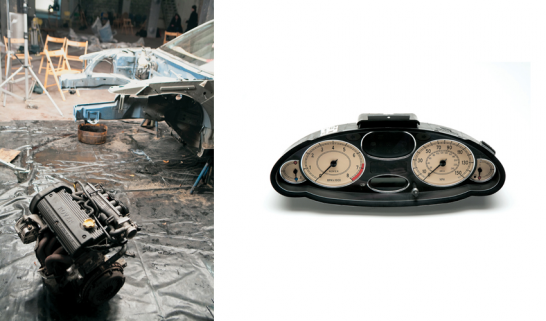








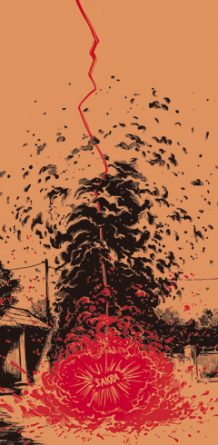






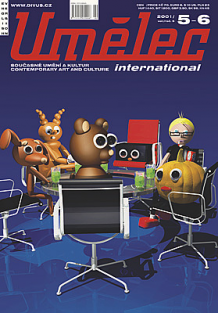






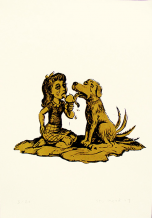
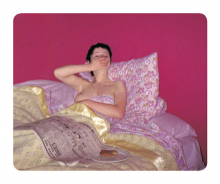


 We Are Rising National Gallery For You! Go to Kyjov by Krásná Lípa no.37.
We Are Rising National Gallery For You! Go to Kyjov by Krásná Lípa no.37.
Comentarios
Actualmente no hay comentariosAgregar nuevo comentario